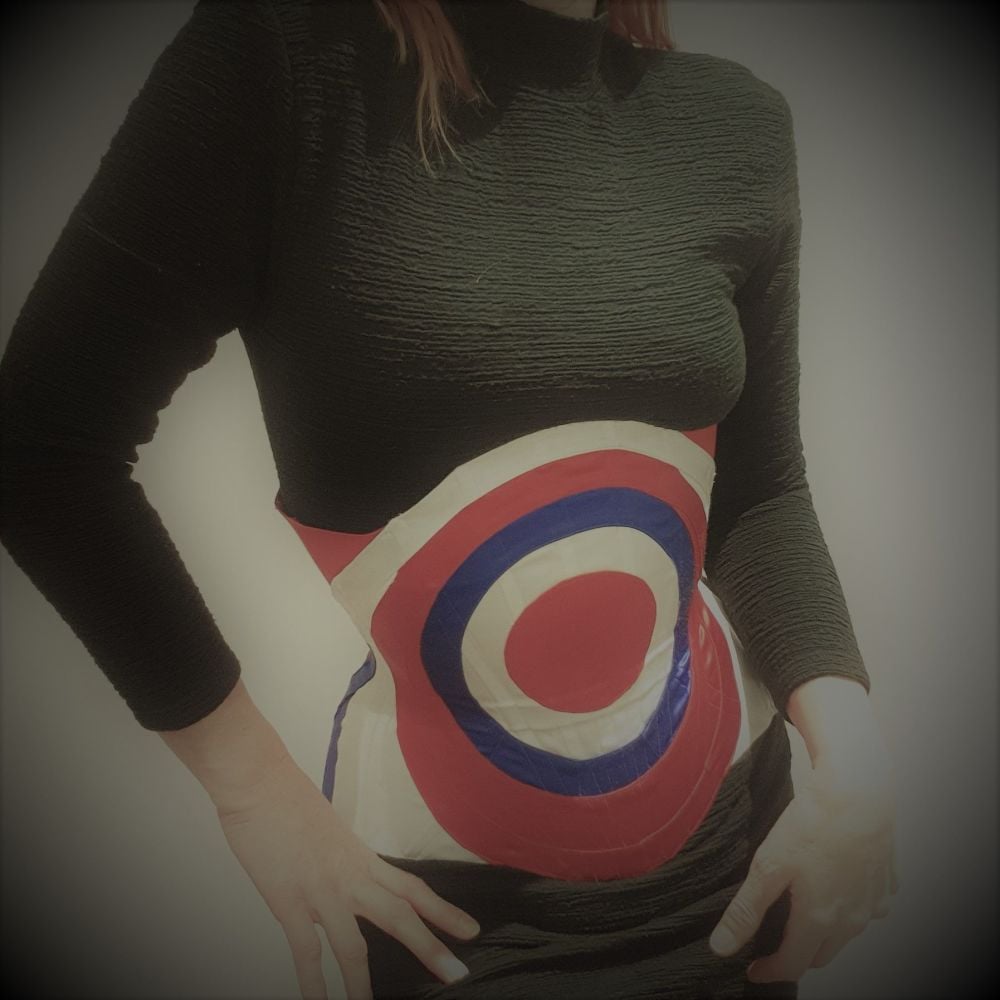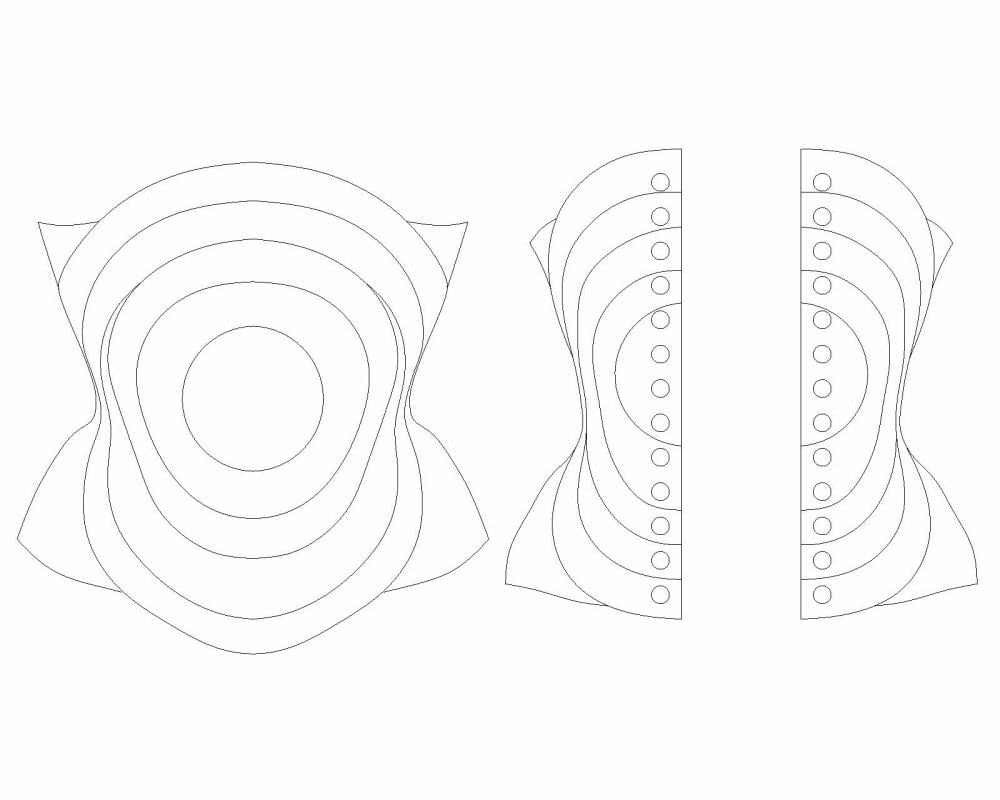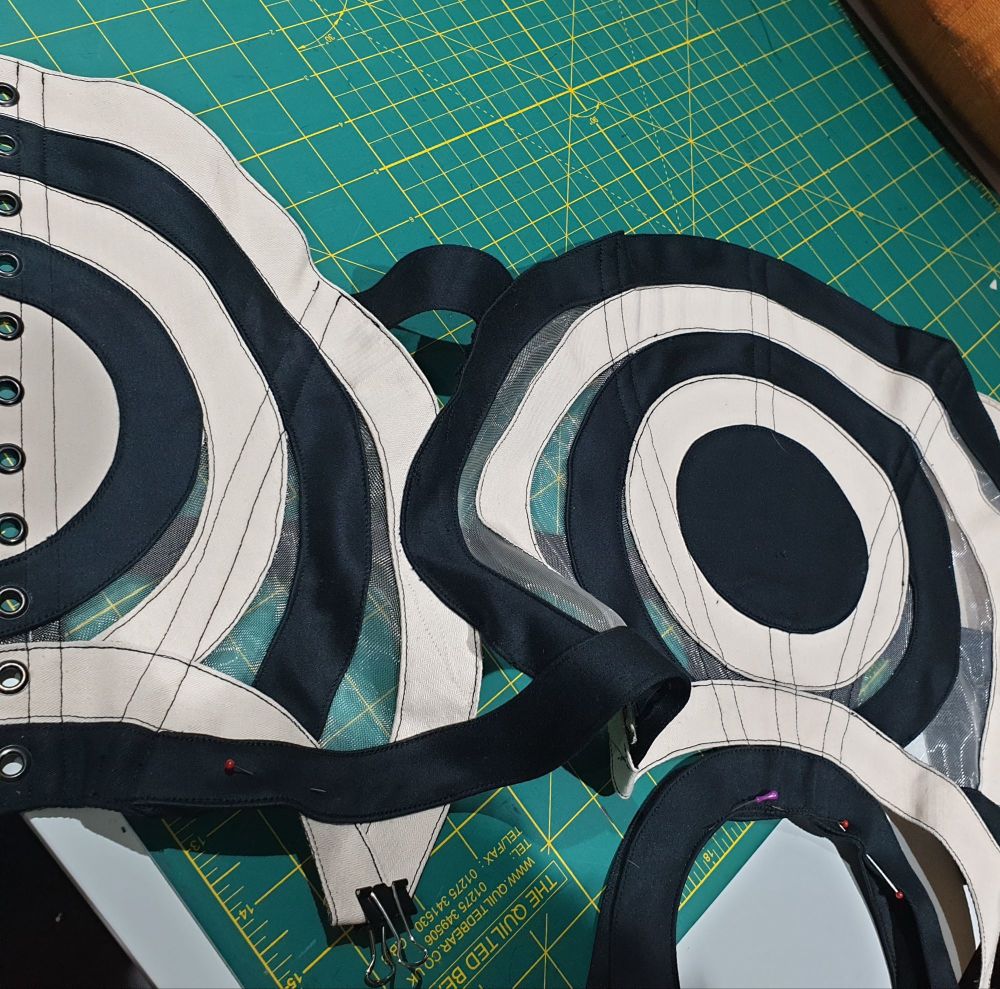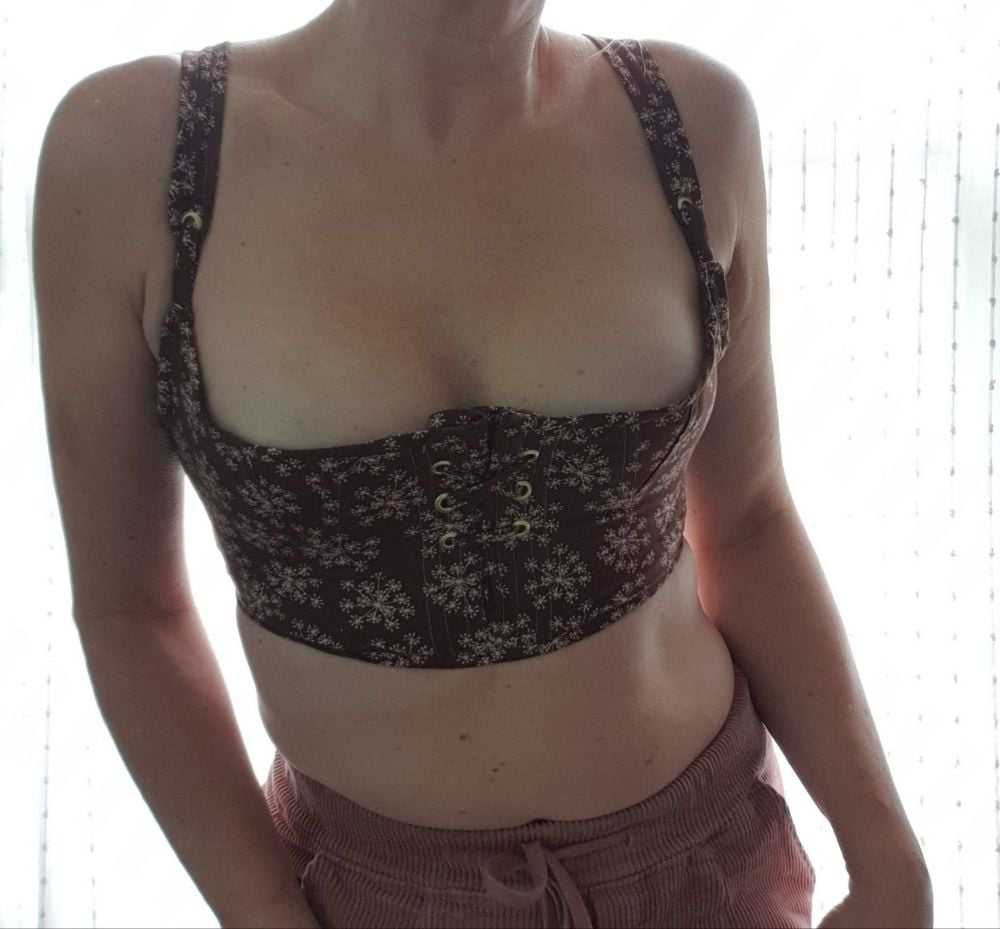Mod roundel target corset finished
Posted on
The pattern itself is not that difficult however it did take quite some time to perfect in terms of wrinkle minimisation and optimum silhouette. The main part is a circle split into concentric circles that splay over the body with gussets forming the negative space within the splayed circles.
The points of note for this design were;
1. Two outer target roundels joined at the mid section (two inner roundels can form a double layer and hide internal seam allowances and boning channels)
2. The circles were cut on the straight grain at the centre front and centre back with bias being introduced elsewhere in the round.
3. A substantial amount of boning was required across the roundels to stabilise the bias stretch - satin coutil was used which is particularly unforgiving.
4. Each concentric circle had its edges stabilised with a line of stitching just inside the seam allowance - this minimised stretch when sewing the two opposing circle seams together.
5. The hip spring was achieved by the two gussets at the mid section - once the two targets were joined these gussets could be manipulated to create slightly varying silhouettes.
6. The rib shaping is conical.
7. No binding was necessary
8. A double layer with 4 target roundels in total gives the best result with boning channels in double layered tape to ensure the bones do not snag on the circle seam allowances.
9. A waist tape was necessary to ensure no stretching of the complex bias fabric interactions.




